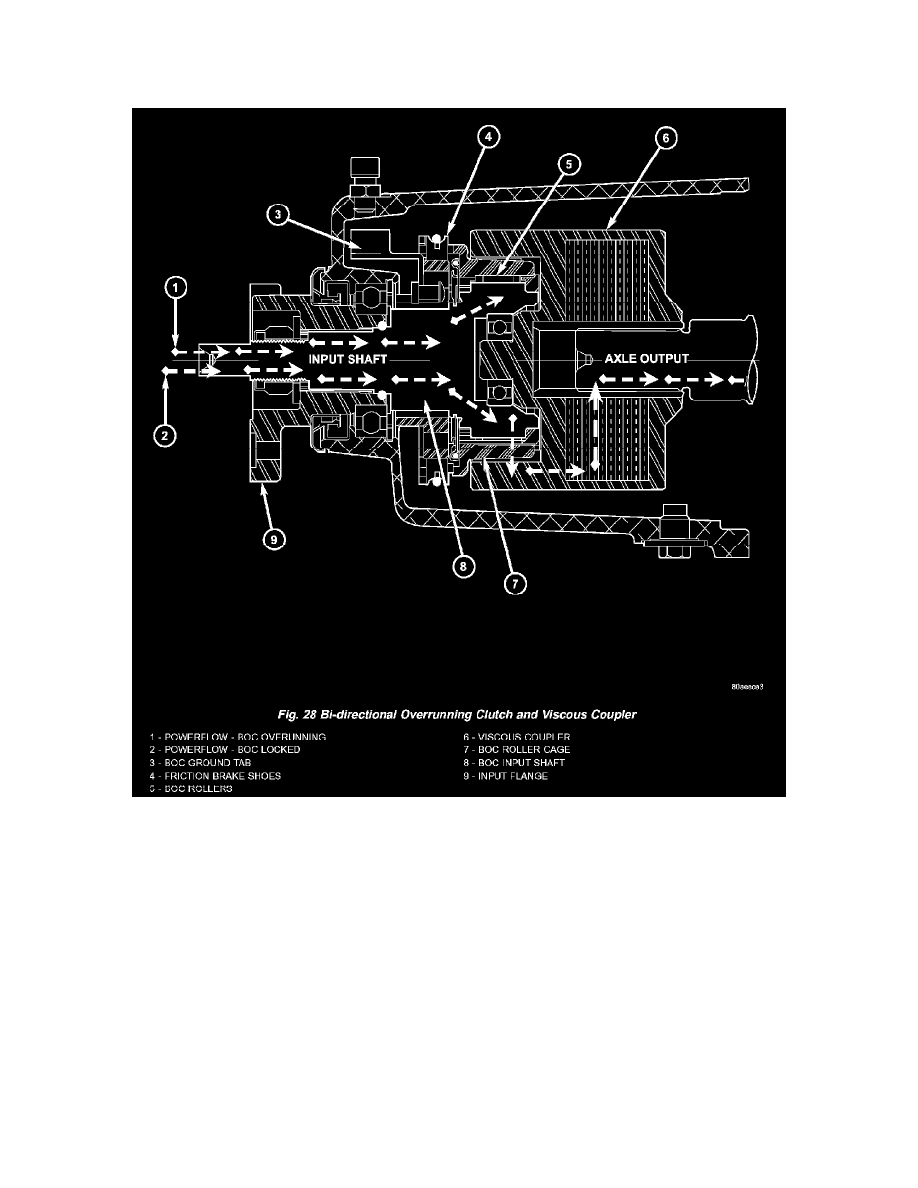Grand Caravan V6-3.3L VIN R (2005)

Differential Clutch: Description and Operation
BI DIRECTIONAL OVERRUNNING CLUTCH
DESCRIPTION
The Bi-Directional Overrunning Clutch (BOC) (Fig. 28) works as a mechanical disconnect between the front and rear axles, preventing torque from
being transferred from the rear axle to the front. The BOC is a simply an overrunning clutch which works in both clockwise and counter-clockwise
rotations. This means that when the output (the rear axle) is rotating faster in one direction than the input (front axle), there is no torque transmission. But
when the input speed is equal to the output speed, the unit becomes locked. The BOC provides significant benefits regarding braking stability, handling,
and driveline durability. Disconnecting the front and the rear driveline during braking helps to maintain the braking stability of an AWD vehicle. In an
ABS/braking event, the locking of the rear wheels must be avoided for stability reasons. Therefore brake systems are designed to lock the front wheels
first. Any torque transfer from the rear axle to the front axle disturbs the ABS/braking system and causes potential instabilities on a slippery surface. The
BOC de-couples the rear driveline as soon the rear wheels begin to spin faster than the front wheels (front wheels locked) in order to provide increased
braking stability. Furthermore the BOC also reduces the likelihood of throttle off over-steer during cornering. In a throttle off maneuver, the BOC once
again de-couples the rear driveline forcing all the engine brake torque to the front wheels. This eliminates the chance of lateral slip on the rear axle and
increases it on the front. The vehicle will therefore tend to understeer, a situation, which is considered easier to manage in most circumstances. During
this maneuver, and during the ABS braking event, the BOC does not transmit torque through to the rear wheels. The rear driveline module, with the
BOC, will perform the same as a front wheel drive vehicle during these events. The gear ratio offset between the front and rear differentials force the
BOC into the overrunning mode most of the time. This allows BOC to significantly reduce the rolling resistance of the vehicle, which improves fuel
consumption, allows the downsizing of the driveline components, and prevents the PTU and propshaft joints from overheating.
OPERATION
In order to achieve all-wheel drive operation in reverse, the overrunning clutch locking functional direction must be reversible. The Bi-Directional
Overrunning Clutch (BOC) changes the operational mode direction depending on the propeller shaft direction. The propeller shaft rotates in the
